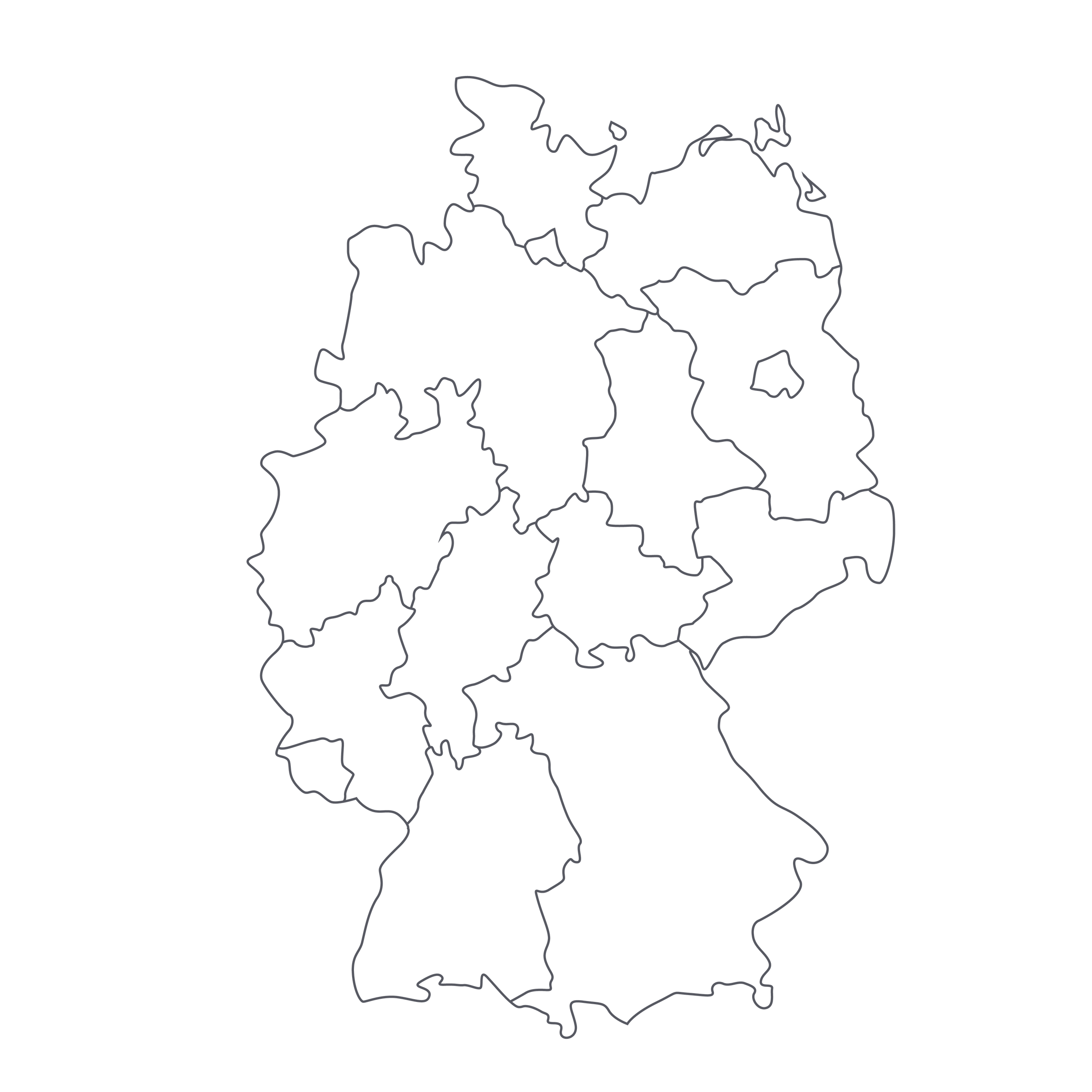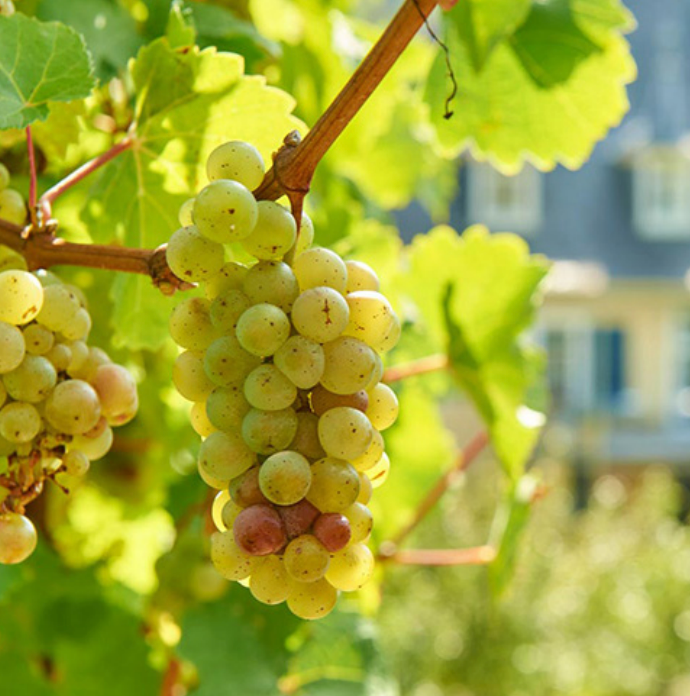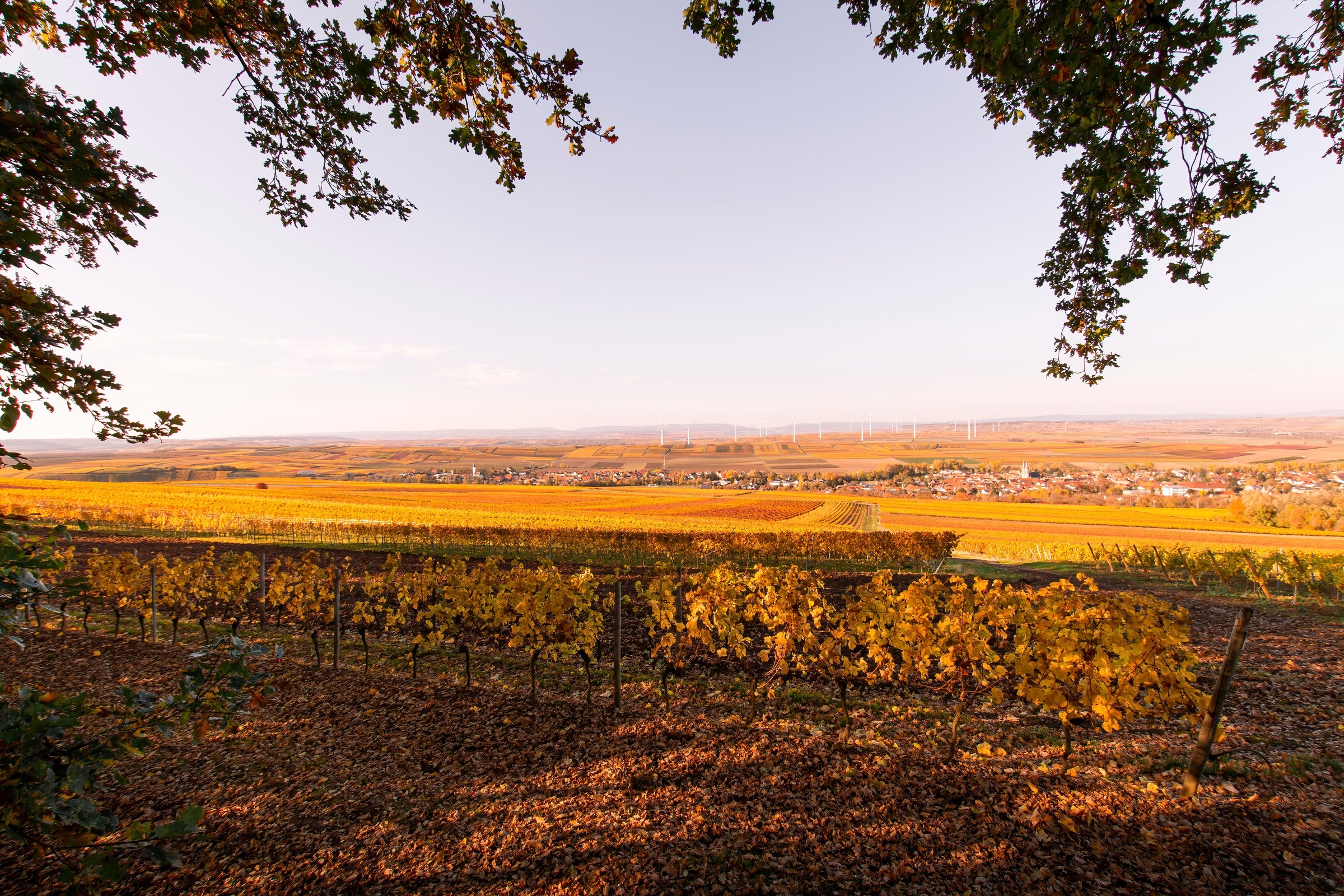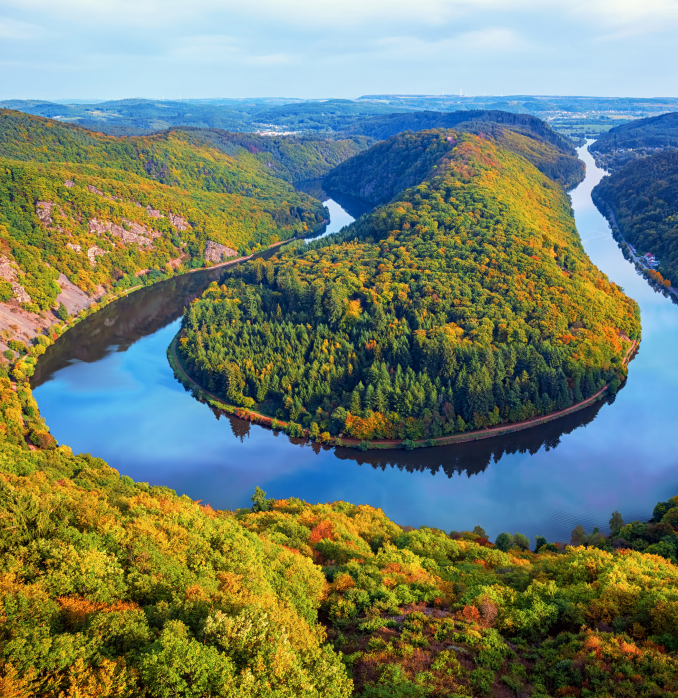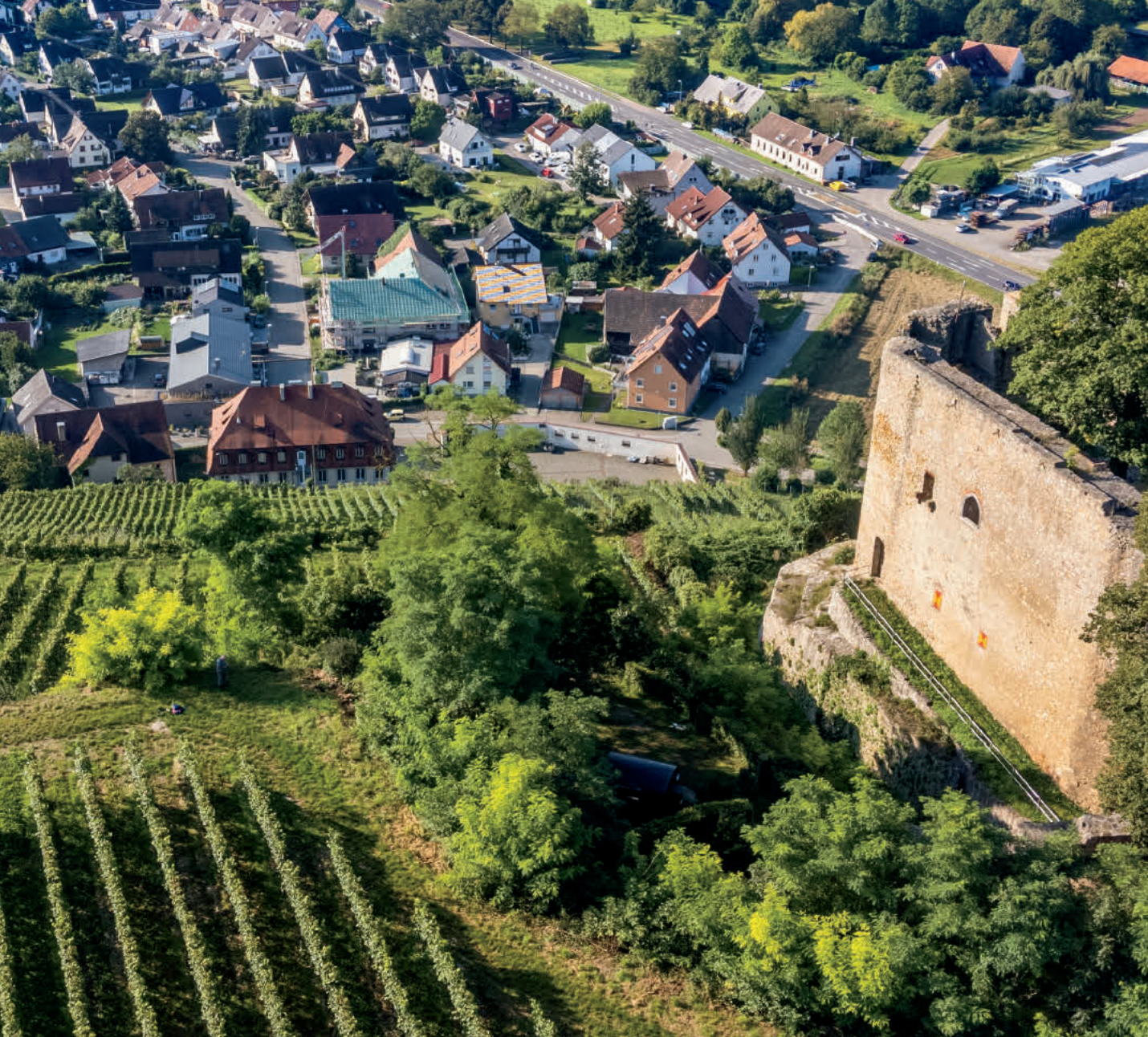Sommeliers, importers, and writers have been spreading the good word about German Riesling for a long time. Forget the overplayed conversation of “sweet or dry”: We like Riesling for its inimitable aromatics and, in the case of today’s wine, its sublime balance of richness and freshness.
In the celebrated Mosel-Saar-Ruwer region, the name Thanisch is a prominent one, but can also make for some confusion: I often see two different estates wrongly umbrellaed as just “Dr. H. Thanisch,” when in fact, the original Hugo Thanisch estate split in the 1980s, divided between two heirs. In the interest of clarity, today’s wine is from Dr. H. Thanisch, Erben Müller-Burggraef (not Dr. H. Thanisch, Erben Thanisch), run by Barbara Rundquist-Müller—a point I make not just for the tiny sliver of German wine enthusiasts who may know the difference between the Thanisches but because I wanted to properly ascribe credit where due for this stunning Spätlese Trocken. Spätlese fermented to dryness is simply one of the most magical white wines in the world, and this one, from the magnificent 2015 vintage, is poised to blow your mind: Sourced from the acclaimed Graacher Himmelreich vineyard, this wine combines seemingly limitless depth with an electric charge of acid-driven energy. Just, wow. Not only is this wine vibrantly delicious now, it will age a good 20 years with ease, evolving into something truly exotic and unforgettable along the way. Great Mosel Riesling like this has no peer in the wine world; there’s simply nothing like it, and when you factor in its scandalously low price, the only thing left to do is hoard as much as you can fit in your cellar!
The Thanisch family roots in Mosel wine reach back some 350 years, with one of the first mentions founded in the registers of the town of Bernkastel-Kues in 1636. The family’s reputation turned golden when Dr. Hugo Thanisch formally established the estate in the 19th century, securing the finest, steepest slopes, located in the most desirable vineyards of the Mosel Valley (the “Doctor” vineyard of Bernkastel; the “Juffer-Sonnenuhr” vineyard of Brauneberg; and the “Himmelreich” vineyard of Graach). Long admired in Europe, Thanisch became an international sensation in 1986, when the family discovered a secret cellar, sealed during World War II. It contained a 1921 Riesling Trockenbeerenauslese from the Doctor vineyard, which sold at auction for more than $6,000! Soon after the global chatter, the Dr. H. Thanisch estate split, and as if German wine labeling wasn’t complicated enough, the newly anointed Thanisch estates lengthened their name with less familiar surnames and hyphens. As a result of consumer confusion, the reputation softened as the two families had to carve out their own “separate but equal” identities. Authority is dynamic and messy, but luckily terroir is constant, and it has been the brilliant light in the knotty Thanisch family tree. And great Riesling, like great Chardonnay, is dependent on phenomenal terroir.
Graach is a dot of a village that sits between Bernkastel and Wehlen on the east side hook of the snake-like Mosel river. If Bernkastel is about power and Wehlen is about finesse, then Graach is somewhere in between, the ultimate Riesling hybrid that is bold and handsome, yet kind and pretty. The town has three famous vineyards: Domprobst, Josephshöfer, and Himmelreich. Himmelreich, the largest of the three, directly borders the southern edge of Wehlen’s “Sonnenuhr” (“sundial”) vineyard. In warm and dry years like 2015, Himmelreich can outperform its famous neighbor due to its deeper soils, which contain a precious reservoir of water beneath a layer of weathered clay and blue slate.
Today’s wine is a landmark bottling for Barbara Rundquist-Müller and her Thanisch estate. In 2007, she inherited the property from her aunt, Margarit Müller-Burggraef, who pointed the estate in a promising direction in 1997; she made key investments in modern cellar technology, like temperature-controlled fermentation vats and more gentle grape presses. When Barbara came along, she multiplied her aunt’s efforts, directing much of her energy into the fitness of the vineyard. She eliminated the use of pesticides, herbicides, insecticides, chemical fertilizers, and heavy machinery. Natural herbs replaced herbicides, pheromones replaced insecticides, and mulch from grape pips, stems, and skins became the new fertilizer. Her eco-friendly approach in the vineyard carried over to the cellar, where she condemned artificial enzymes, the use of sorbic acid to stabilize wines, industrial cleaners, and liberal doses of sulfur dioxide. Today’s wine is a culmination of meticulous attention from a new era. In many ways, despite all its history, the Dr. H. Thanisch, Erben Müller-Burggraef legacy begins now.
Aged in the archetype Mosel
fuder (1,000-liter casks), this ultra-ripe, late-harvested 2015 is technically dry, fermented to 11% with a sliver of sweetness, disguised as wavy texture, juicy richness, and swagger. This is clearly a serious wine, collected by Michelin-starred restaurants and one you’ll want to share with your most dear wine junkies. Choose a wine stem that is not too wide, but rather funnels and focuses the aromatics. Open the bottle and let the wine breathe for an hour; it is jam-packed with flavor and aroma and benefits markedly from at least 30 minutes in a decanter. Soft gold and platinum shine in the glass like freshly cut gems. After the first big whiff of the wine, you’ll feel like you just jumped into the most refreshing cold pool. It’s concentrated and zesty with aromas of lemon/lime blossom, candied peach, green apple, pink guava, green papaya, and pineapple. A surge of rock-candy and crushed wet slate turns almost salty, then honeyed, then superbly tart and dry. It is richly textured, almost unctuous, but then the magic happens—it finishes with a refreshing squirt of citrusy acidity and a deep wet-slate mineral grip. Serve it at 50-55 degrees to maximize its aromatic impact and pair it with something it can “foil” with its texture and complex flavors. One of my favorite cuisines to pair with dry Riesling is Cantonese (southern China): the attached recipe for ginger and scallion steamed fish is one of my all-time favorites. I guarantee it will blow your guests away when served with this wine, jasmine rice, and
this baby bok choy Recipe. Enjoy!


